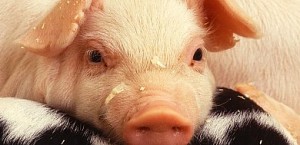COLUMBUS, Ohio — No need to go hog wild. Despite a recent report from Britain’s National Pig Association predicting a worldwide shortage of bacon due to drought, the U.S. is not experiencing a pork shortage.
But consumers can expect to pay higher prices at the grocery counter next year because of a decrease in pork supplies as a result of the 2012 drought, which has been the worst in decades.
Less corn for feed
The drought, which severely impacted growers and producers nationwide, particularly in Midwest states, is resulting in a 13 percent drop in corn production — the lowest production since 2006, according to the U.S. Department of Agriculture.
Much of Ohio is still experiencing abnormally dry, moderate or severe drought conditions, mainly in the western, southern and eastern areas of the state. A majority of Indiana was rated in moderate drought.
Ohio State University Extension Swine Specialist Steve Moeller said the drought has forced pork producers to pay higher prices for feed, which makes up 70 percent of the cost to raise a pig.
As a result, many producers are losing money.
In the red
“Pork producers were making about $10 to $12 per head in the beginning of 2012, but are now losing $40 to $60 per pig marketed,” he said. “And that may continue through the end of the year.
“The drought has created a situation where feed costs alone are very near the market value of the pig,” he added. “Producers are basically earning enough to just cover the cost of feeding the pig.”
Trimming herds
As a result, producers are starting to pull back, because they need to position themselves to not lose as much money in the short term, Moeller said.
Producers are cutting their herds due to the cost of feed, and breeding fewer sows, Moeller said, and he expects there will be fewer pigs in the market come summer 2013.
Pay more in store. “The reduction in pig numbers is going to play out in the form of higher prices for pork because there will be a smaller supply to meet consumer demand,” Moeller said.
The USDA projects U.S pork supplies will drop about 1.3 percent next year versus this year, while consumer prices for meat, poultry and seafood will increase some 4 percent.
So while pork prices will be higher next year, there will be plenty of pork for consumers to buy, Moeller said.












The bacon the British call bacon isn’t the same thing we call bacon. The bacon they call bacon is what we call Canadian bacon, which comes from a different part of the hog than our bacon, which is made from pork belly.